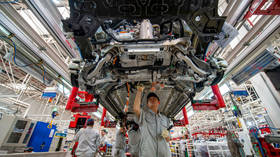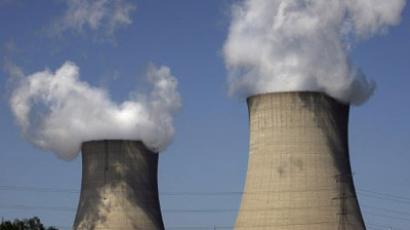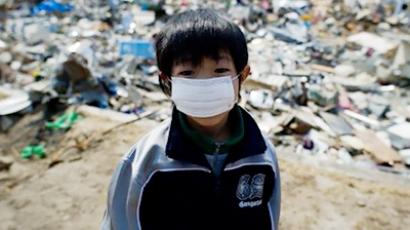Fukushima 45 tonne radioactive leak 'reaches ocean'
Experts warn Japan faces more danger from radioactive particles in consumer food, after reports of a new toxic water leak from the Fukushima nuclear plant.
Some 45 tons of radioactive toxic water has reportedly leaked out of the shattered plant and may have found its way into the ocean during the weekend, according to David Wagner from Country Risk Solutions in Tokyo.The nuclear station’s reactor hot zones melted down after a 11 March quake, and the tsunami which followed devastated the site altogether.Wagner found the new leak is small compared to previous leaks: 80 per cent of all the radiation contamination occurred back in March.There have been reports of radioactive substances being found in Japanese food in recent weeks. But the real problem according to Wagner, is that less than one per cent of the food is being tested for radioactive nuclide particles. Plus, food is only tested for Cesium-134 and Cesium-137, but not for other types of radionuclides, such as Strontium and Plutonium.“Those are very dangerous radionuclides. Once they get into food and are absorbed with it – this could lead to bone cancer,” he says.Japanese specialists are working to bring the nuclear fission in the destroyed reactors under control – but this is only expected by 2016. Later this month, Japan may declare the reactors in “cold shutdown”, meaning water used to cool the fuel rods would stay under boiling point. This is considered an important milestone in stabilizing the plant.“That remains to be seen. But it is clear that they feel they’ve got it under control. But there is always a threat there could be another earthquake – and that is something most people do not talk about. It is possible,” David Wagner said.But Dr. Robert Jacobs, an associate research professor at Hiroshima Peace Institute, says plans for a cold shutdown are nothing but “a publicity mode.""A cold shutdown is when a normally-operating reactor is brought off-line and the heat is reduced. We don’t have nuclear rods inside a nuclear reactor core. What we have is corium – nuclear fuel which has melted and is now pooled at the bottom of the reactor. So it is not really possible to call it a shut down in a controllable manner,” Dr. Jacobs told RT.“What they can do is try to bring the temperature down to a level where it will no longer form a threat of melting through the containment of the reactor. This is far from a cold shutdown. The fuel will remain hot for quite a long time and they will need to put effort into containing it within the containment structure. It can take decades to bring it to a point when it is no longer a threat to the eco-system,” he added.














